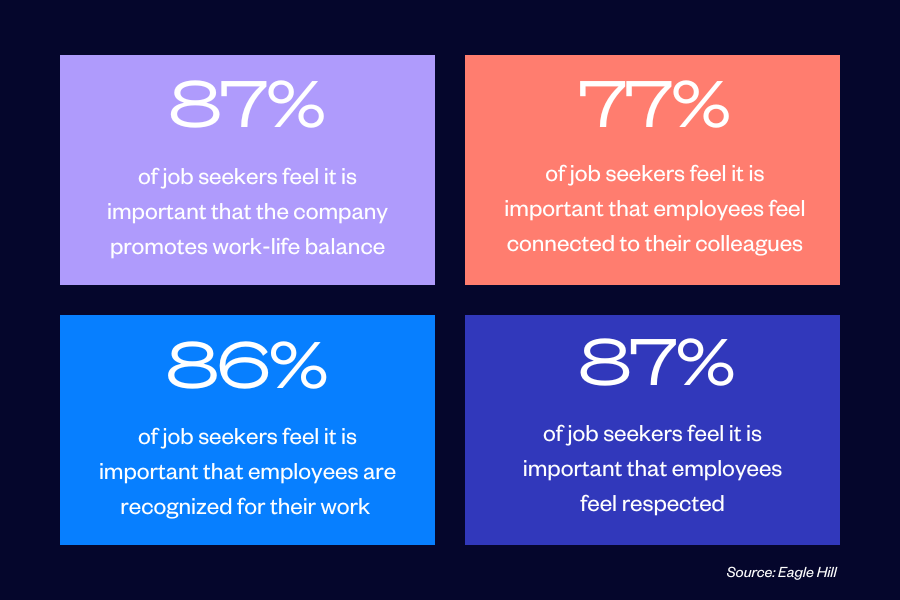Like it or not, social media is an unavoidable facet of life and work. North Americans spend over two hours on social media every day. Based on 2023 usage rates, the average person will spend more than six years and eight months on social media in their lifetime. Why not take advantage of all that time and use it to improve your recruiting outcomes?
Social Can Find Hard-to-Reach Candidates
Some of the best candidates for your job aren’t actively searching for a new position.
Passive job seekers would leave their current jobs but aren’t driven enough to be scrolling through a job board, for whatever reason. When presented with the right opportunity, however, passive job seekers will apply. Reaching these passive candidates could mean the difference between finding your dream candidate and hiring a dud. In today’s tight labor market, it could determine whether you fill the job at all.
Just like half the global population, these passive candidates scroll through social in their downtime, and 37% of them view and discover jobs while doing so. These passive seekers would never find your jobs online otherwise, but with the power of social media, those jobs can be delivered right to their feeds, where they may be far more tempted to apply – or at least will become aware of your company.
But passive job seekers aren’t the only ones looking for positions: 86% of all job seekers use social media in their job search. At the end of the day, people’s eyes are already on social media.
Social Ups Your Brand – And Candidates are Looking
Beyond creating leads for your open jobs, social media is also powerful as an employer brand tool (surprise, surprise). A well-curated social media feed can tell the story of why someone should be interested in your company. A social feed uniquely allows you to control and bring life to the personal story of your employer brand, unlike a Glassdoor page. And job seekers are eager to see this story: 82% of them consider employer brand before applying. More and more, workers are looking for companies who care about their employees and create space for them to flourish. Just look at this latest job seeker data:

Curating a social media presence as a brand can bring some humanity to it. Pictures of happy workers accompanied by positive testimonials could make a difference for job seekers. An employee’s story carries much more weight than a CEOs’, and social media gives you the chance to share them.
Don’t Post Alone
Social has the power to bring awareness of your brand and available jobs to new job seekers but is not always a driver of applications. Think about it: over 97.4% of social media traffic comes from mobile. Job seekers aren’t clicking away from their apps and rushing to upload their resume on their phones. Instead, social is a visibility source. Gathering leads on interested job seekers can create better-quality applications in the long run.
It’s easy to think you’re an expert on social media; I’m sure you’ve posted on Instagram, liked a post on Facebook, and maybe ever retweeted a Tweet (an X? Even the experts are unsure). But just because a person has gotten over 100 likes on an Instagram post doesn’t mean they can properly manage a company’s social media. For example, only 39% of companies share employer brand content beyond job posts. Attempting to manage a social media presence and social job ads without an expert opinion will lead to worse results and end up being a waste of time.
Why Is Social Media Good for your Recruitment Funnel?
A recruitment strategy is more than just programmatic. A social strategy allows you to reach passive candidates and perhaps even nurture them to become applicants. Collaborating with a search strategist allows you to retarget interested passive job seekers. Social’s capability to define and expand a brand’s image cannot be overstated either. Social media can transform your recruitment strategy and widen your funnel.


